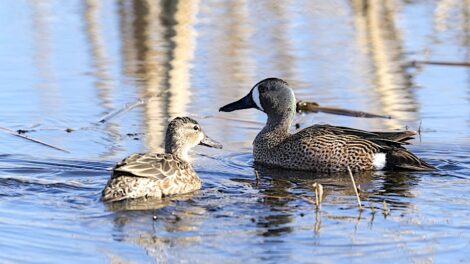North Dakota Outdoors: Who doesn’t love having monarch butterflies?

Submitted Photo Future of monarch butterfly hanging in balance. Photo from NDGF.
Revering walleye, pheasants, or bucks is about as Midwestern as loving summertime baseball, hot dogs and mom. In an honest conversation you’ll hear an underscoring appreciation for pike, meadowlarks and monarchs. Who doesn’t love the fight of a northern, the sound a meadowlark makes perched on a fence post? When a monarch is found in the garden many will find it a perfect time to take a moment’s break, wipe the sweat off the brow and appreciate the beauty of these summer staples.
But as has been documented, the future of the monarch is hanging in the balance.
Endangered Species Act listing proposal
The U.S. Fish and Wildlife Service reopened the public comment period for a proposed rule to list the monarch butterfly as a threatened species under the Endangered Species Act. The proposed rule includes species-specific protections and flexibilities to encourage conservation of the butterfly under section 4(d) of the ESA. The comment period is reopened until May 19, to give all interested parties an additional opportunity to comment on the proposed rule, which was published on Dec. 12, 2024. Comments that were previously submitted do not need to be resubmitted as they are already incorporated into the public record and will be fully considered in the final listing determination.
Public comments are an integral part of the ESA listing determination process, and the USFWS recognizes the complexity of the information requested for public comment in the proposed rule. By reopening the public comment period, the agency is ensuring everyone has a chance to share information relevant to the conservation status of the species, including the associated 4(d) rule and proposed critical habitat designation.
The reopening of the public comment period for the monarch butterfly will publish in the Federal Register Reading Room. Information about how to submit comments can be found on regulations.gov by searching for docket number FWS-R3-ES-2024-0137.
Everyone can play a role in saving the monarch butterfly. Because of the species’ general habitat use and wide distribution, all sectors of society have an opportunity to participate in a broad range of conservation efforts throughout the butterfly’s range.
More about
monarch in ND
Monarchs are typically found in areas with a high number of nectar sources. While domestic plants are used, native flowers are preferred. Monarchs in the caterpillar stage rely exclusively on milkweed so areas with a high density of milkweed will contain both caterpillars and adult monarchs.
Key areas, conditions for monarch in ND
Monarchs are found throughout North Dakota. Areas with a higher density of native prairies would be more likely to support monarchs.
Problems which may affect species
The loss of habitats that contain milkweed is the primary cause for this species’ decline. Loss of habitat with high quality nectar sources for adults, such as native prairies, is also a concern. Connectivity between usable habitats is a concern.
Other natural or manmade factors
The use of herbicide for weed control at certain times of the year in native prairie tracts may be a detriment by reducing nectar sources for the butterfly. Insecticide use near populations may also be a factor.
Previous research
or surveys
The University of Minnesota has done feeding studies of the monarch. Iowa St. University has looked at the effects of herbicide use on monarchs. Royer surveyed butterflies at a number of sites in North Dakota.
Management recommendations
– Develop pollinator habitat.
– Protect and manage high quality native prairie.
– Develop connectivity between quality habitat.
– Delay haying of habitat until after end of adult flight.
– Plant milkweed and native nectar plants to improve habitat.
– Avoid broadcast spraying of pesticides and herbicides at known sites to minimize loss of adults and nectar sources.
You can learn more about the monarch butterfly, the monarch listing proposal, and how to help conserve monarch butterflies at fws.gov/monarch.

